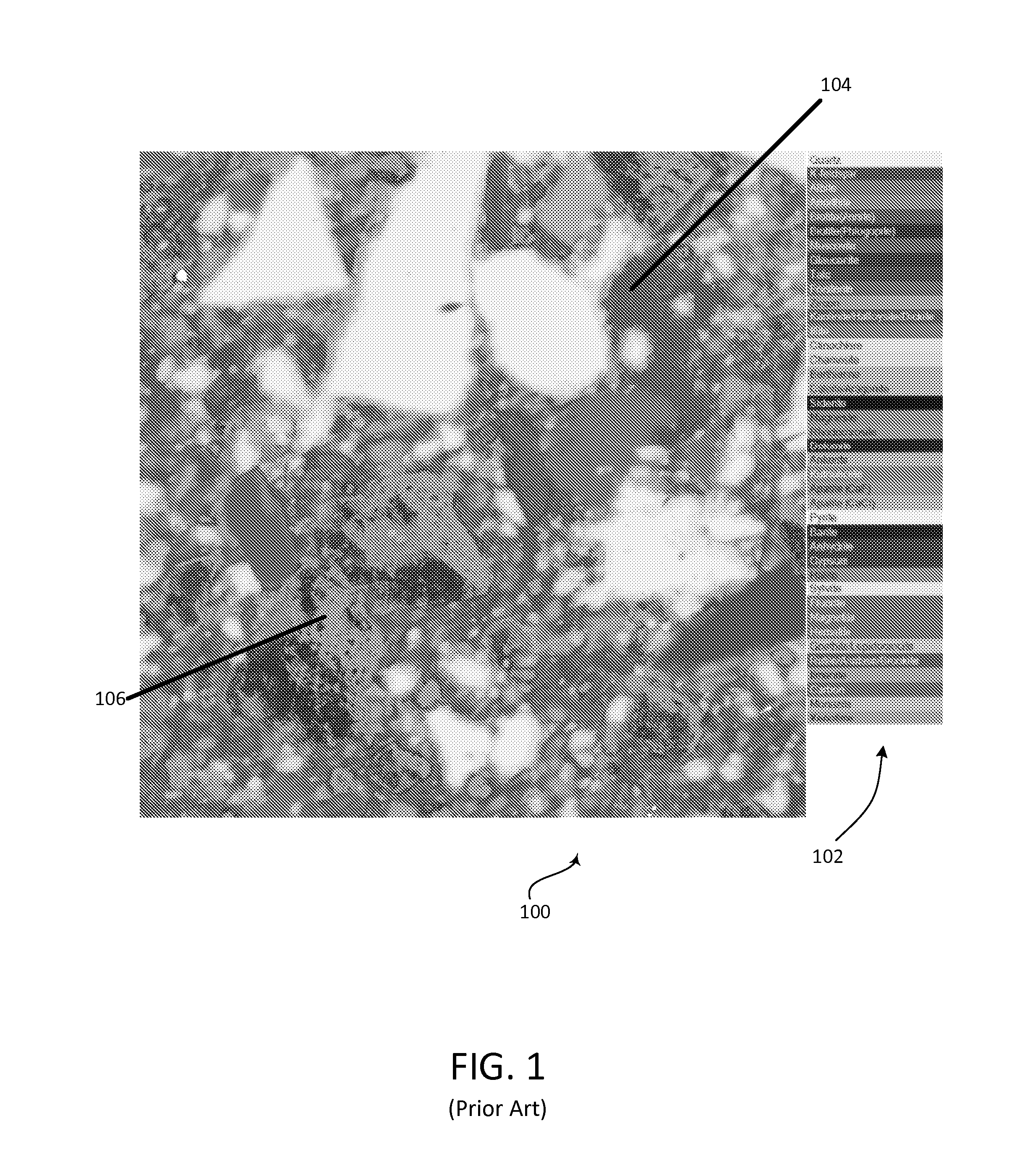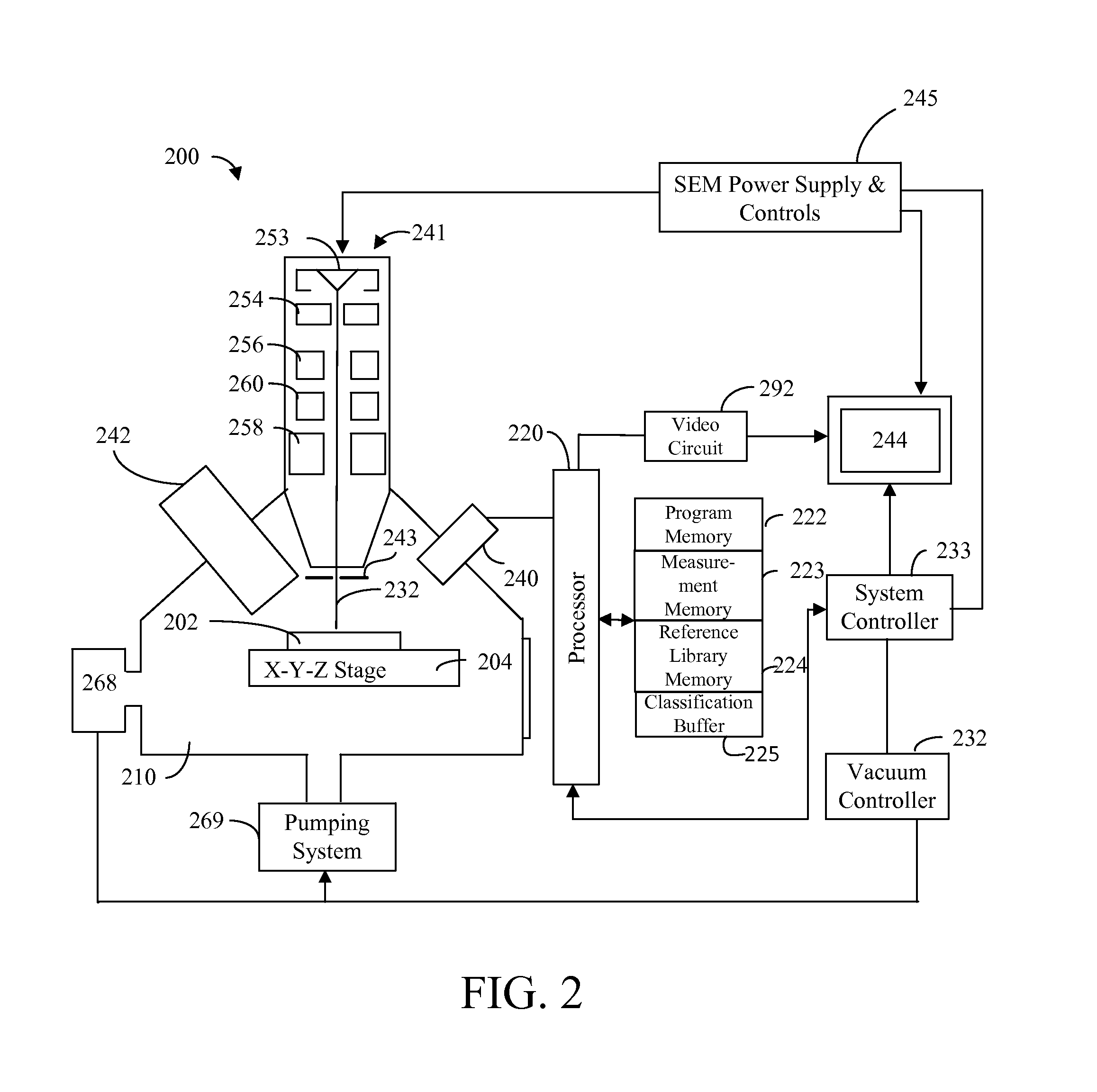Sample-specific Reference Spectra Library
a reference spectra and sample technology, applied in the field of sample-specific reference spectra libraries, can solve the problems of reducing the processing efficiency of reference spectra, and limiting the size of tiles,
- Summary
- Abstract
- Description
- Claims
- Application Information
AI Technical Summary
Benefits of technology
Problems solved by technology
Method used
Image
Examples
Embodiment Construction
[0024]Embodiments of the present invention provide a method for identifying the mineral phases present in a sample. The composition at each point is determined from a spectrum or other characteristic measurement obtained at each point on the sample. The points typically contain multiple mineral phases, and so the spectrum or other measurement is typically a composite spectrum or measurement characteristic of multiple elements. Determining the material present in the sample is referred to as “material classification.” The invention is not limited to any particular type of analysis or spectrum. It may be useful in various analysis applications in which the sample is composed of multiple components, particularly when the smallest portion of the sample from which information is derived, such as a beam interaction volume, includes multiple materials, and the analysis thus requires deconvolving the measured data into multiple components. The techniques described herein may be useful, for ...
PUM
| Property | Measurement | Unit |
|---|---|---|
| diameter | aaaaa | aaaaa |
| energy distribution | aaaaa | aaaaa |
| energy distribution | aaaaa | aaaaa |
Abstract
Description
Claims
Application Information
 Login to View More
Login to View More - R&D
- Intellectual Property
- Life Sciences
- Materials
- Tech Scout
- Unparalleled Data Quality
- Higher Quality Content
- 60% Fewer Hallucinations
Browse by: Latest US Patents, China's latest patents, Technical Efficacy Thesaurus, Application Domain, Technology Topic, Popular Technical Reports.
© 2025 PatSnap. All rights reserved.Legal|Privacy policy|Modern Slavery Act Transparency Statement|Sitemap|About US| Contact US: help@patsnap.com



